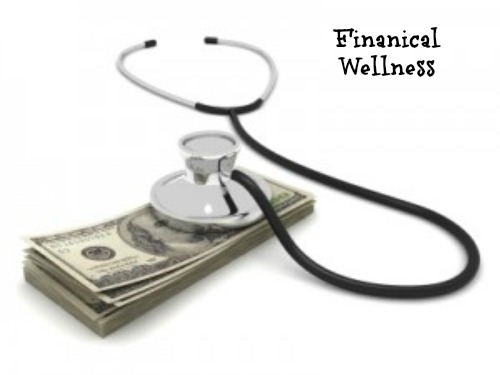 Have you ever given much thought as to what the consequences could be if you did not go to the doctor for ten years?
Have you ever given much thought as to what the consequences could be if you did not go to the doctor for ten years?
We all know that an annual check-up with a physician is important in maintaining proper health and physical fitness.
Well, the same holds true with your money.
Now, I understand that some people choose not to go to the doctor on purpose!
No one wants to be told they have high cholesterol, when then love big macs.
No one wants to be told to get more exercise, when they love binge watching House of Cards while sitting on the couch.
It is much easier to bury your head in the sand and let the chips fall where they may…then actually make healthy changes to your life!
Should you do the same with your money?
Checking your Financial Pulse
Regularly checking your financial pulse can show whether you are on solid financial ground, or whether you have strayed a bit from your goals and objectives.
There are two simple examinations that can help you better understand your financial well-being. In addition to showing you where you stand (financially) today, they can provide the basis for important financial comparisons in the future.
Looking for Symptoms
The two examinations you are going to perform are the balance sheet (or net worth statement) and the cash flow statement. Although many personal finance books have sample worksheets, you can easily formulate your own.
Balance Sheet
To create a balance sheet, simply draw a line down the center of a blank piece of paper and label one column Assets and the other Liabilities. Assets are everything that you own, and liabilities are everything that you owe.
Assets
- cash/cash equivalents (e.g., checking and savings accounts, money market funds, certificates of deposit);
- invested assets (e.g., stocks, bonds, mutual fund accounts, retirement accounts)
- personal use assets (e.g., your house, home furnishings, autos, boats, personal property).
Liabilities
- short-term (e.g., auto loans, most personal loans, credit card debt)
- long-term (e.g., home mortgages, home equity loans, some educational loans).
Just plug in all the relevant numbers (you might have to dig a little through your records) and add up the two columns.
Cash flow statement.
Again, divide a piece of paper down the middle and label one column Cash Inflows and the other Cash Outflows.
On the inflow side of the ledger, list monthly (or yearly) income from all sources such as wages, self-employment, rental activities, and investment income (e.g., interest and dividends).
On the outflow side, list all monthly (or yearly) expenditures separating fixed expenses (e.g., mortgage payments, other periodic loan payments, insurance premiums) and variable expenses (e.g., utilities, food, clothing, entertainment, vacations, hobbies, personal care).
You might want to put taxes (federal, state, FICA) in a separate category.
Again, plug in the relevant numbers and total the columns.
Diagnosing Your Condition
A Strong Pulse. . . Your balance sheet shows your assets exceeding your liabilities, the difference being your net worth; and your cash flow statement shows more inflow than outflow. A strong pulse tells you that you are solvent and you are spending within your means. The degree of strength depends on the size of your surpluses. Great job!
A Weak Pulse . . . Your balance sheet shows your liabilities exceeding your assets and/or your cash flow statement shows more outflow than inflow. A weak pulse can indicate that you are spending beyond your means. The lack of strength depends on the severity of your deficits. Needs improvement!
Prescription
! Increase your net worth each year and keeping your annual expenditures under control !
However, if your pulse is not where it should be today, you can take action now to better your financial health!
- Put together a debt payoff strategy to reduce your liabilities and increase your assets
- Start recording all of your expenses and look to reduce spending. Any surplus income should be used to create an emergency fund, then a long term investment account for growth.
As always, you can consult with me to discuss your current financial situation. (I promise I won’t make you give up the Big Macs)
Look for future posts on the best ways to make your money last in retirement and check out my recent post on Bonds, Interest Rates and Inflation
Lastly click here to sign up for all great stuff The Art of Financial Planning has to offer!
Thanks for stopping by and I hope you achieve financial success!


